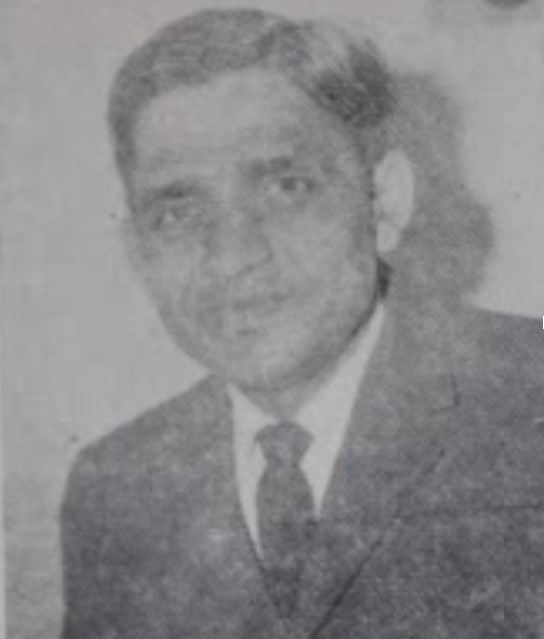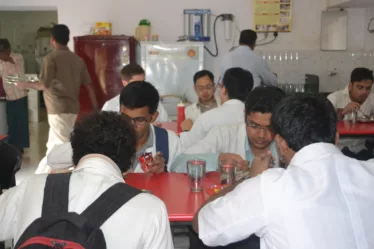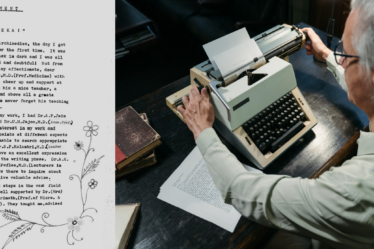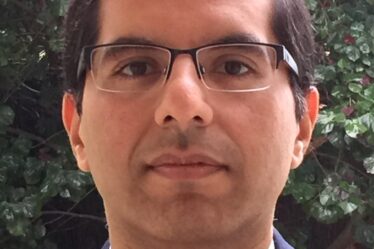
Bhupendra Nath Das—widely known as B.N. Das and one of the earliest members of the MGIMS library team—called me this morning. Now in his early 80s, his voice quivered with emotion as he reminisced about Dr. R.V. Agrawal’s role in establishing the MGIMS library.
B.N. Das, then a 24-year-old from Calcutta, would later retire from the MRD section of the Kasturba Hospital in 2002. Alongside him was a Nepali attendant—his name lost to memory but not his diligence—who, with Das, Mr. N.G. Reddy (the librarian), and assistant librarian Deorao Taksande, formed the original library team. Together, they tended to the tiny space like it was a sapling—watering it with care, nurturing it with faith, and rooting it with purpose.
Das’s journey had taken him from Tripura—then a part of East Pakistan—to Nagpur, before arriving in Sevagram through a family connection. He began typing letters in the Dean’s office and eventually found himself stationed in the library.
“Very few people know,” he told me, “that Dr. R.V. Agrawal, the professor and head of Pathology, was also the first teacher in charge of the MGIMS library.”
The year was 1969. The college had just begun, and the library was nothing more than a small room tucked beside the Biochemistry and Pathology labs on the ground floor of the old hospital. It had a table, two chairs, an almirah, and 35 books. But Dr. Agrawal saw more. He believed in the potential of this tiny space and took it upon himself to build it into something meaningful.
He persuaded Dr. Sushila Nayar to allocate more space and funds, and with the help of his small team, he secured two large halls—now occupied by the Community Medicine department. He brought in books from his own collection, reached out to friends, and encouraged generous donors. Dr. I.D. Singh, the institute’s first principal, donated his personal collection. Soon, the shelves were brimming—at one point, half the books on display had been donated by well-wishers.
But Dr. Agrawal’s commitment was more than administrative—it was deeply personal. When monsoon rains once flooded the library through open windows and books began soaking, Dr. Agrawal rushed to his home, returned with old clothes—including one of his own shirts—and began mopping the floor. He didn’t stop until the last puddle had dried.
One eye on the microscope, the other on a bookshelf—he was a pathologist, yes, but at heart, a true bibliophile. He often referred to the library as “his child.”
After leaving Sevagram in 1976, Dr. Agrawal joined BJ Medical College in Pune as Dean. At the time, MGIMS did not yet offer postgraduate courses. But Dr. Agrawal never forgot his students. He used his position to offer them a way forward—inviting students from the early batches (1969–1972) to pursue their post graduation at BJ Medical College. Thanks to his goodwill and support, many found their next step in Pune.
Thanks to his support, several students from the early batches made it to BJ. Among them were Rajendra Deodhar and Bhakti Dastane from the 1969 batch. The following year saw Pramod Gupta, Rajiv Hivre, Anilkumar Jain, Sureshkumar Jain, Ajay Raj Kamra, and Prakash Kulkarni walk through BJ’s gates, carrying with them the grounding of Sevagram. From the 1971 batch came Som Nath Bami, Govind Bang, Surinder Bajwa, Dilip Gode, Sanjeevanee Gole-Kelkar, Dilipkumar Jobanputra, and Vishweshwar Shete. Even students from the 1972 batch—Krishan Dutt Bharadwaj, Shirish Gode, and Jagdish Prasad Sharma—found their way to Pune, mentored from a distance by the professor who had once helped build their library and taught them Pathology at MGIMS. It wasn’t just academic support. It was a continuation of his deep investment in their growth and success.
Dr. R.V. Agrawal was not just a professor or an administrator. He was a builder—of spaces, of systems, and of futures. His story, like so many others from the 1970s, is a reminder of what leadership, love for learning, and simple acts of kindness can do.
More about him, soon.


